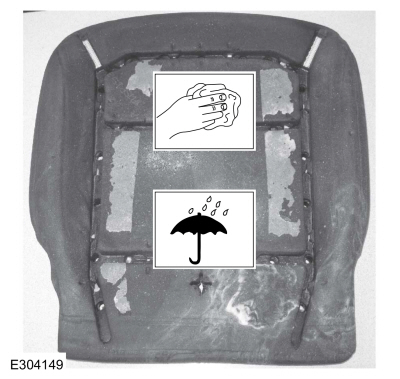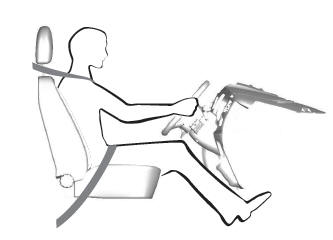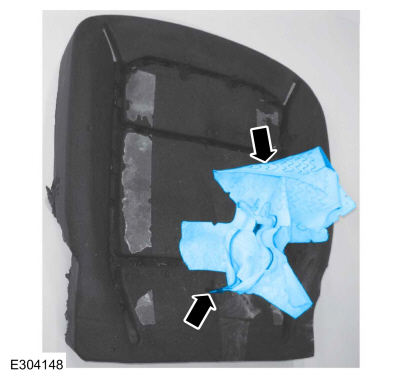Ford Escape: Rear Drive Axle/Differential / Description and Operation - Rear Drive Axle and Differential - System Operation and Component Description
System Operation
System Diagram

| Item | Description |
|---|---|
| 1 | Drive Mode |
| 2 | PCM |
| 3 | ABS |
| 4 | Accelerator Pedal Position |
| 5 | BCM |
| 6 | Ignition Status |
| 7 | GWM |
| 8 | AWD |
| 9 | Speed / Position sensor |
| 10 | Actuator motor |
| 11 | Steering Wheel Angle |
| 12 | Vehicle Acceleration |
| 13 | Wheel Speed |
| 14 | RDU |
RDU
The RDU contains an actuator motor, ball ramp, position speed sensor and a multi-plate clutch pack. The position/speed sensor mounted on RDU is reading the ring gear speed. The RDU position/speed sensor provides the information of drive shaft speed and its position. The RDU is not on the vehicle CAN bus. The PTU (Power transfer unit) is a gearbox that attaches to the transmission. It directs power from the transmission differential case through a dog clutch to a hypoid ring gear which is splined to the output flange. When the dog clutch is released, no torque is transferred to the rear driveshaft. When the dog clutch is applied, up to 50% of transmission differential case torque may be transferred to the rear driveshaft.
The RDU and PTU (Power transfer unit) interface receive direction from the AWD module. The AWD system continuously monitors vehicle conditions and automatically adjusts the torque distribution between the front and rear wheels. During normal operation, most of the torque is delivered to the front wheels. Both the PTU (Power transfer unit) dog clutch and RDU multi-plate clutches are disengaged and the drive shaft does not rotate in the normal operation. When vehicle require AWD operation, the AWD module commands the RDU to engage the multi-plate clutch, which in turn engages the rear differential to rotate the drive shaft. When the drive shaft's speed is within 30 RPM of the front axle, based on RDU speed sensor which is reading ring gear speed, the AWD module commands the PTU (Power transfer unit) dog clutch to engage, transferring torque to all 4 wheels. The system will then apply or release the RDU clutch pack when necessary depending on road conditions.
The AWD system may be referred to as a 4WD system in other service information and owner literature or messages located on the message center. The AWD system is an active system, which means it not only responds to wheel slip between the front and rear axles but also has the ability to anticipate wheel slip and transfer torque to the rear wheels before the slip occurs. The AWD system is active all the time and requires no input from the operator.
The RDU is an open differential with electronically controlled clutch pack system. The RDU system vary the amount of torque to the rear axle by controlling the actuator motor by following modes:
Economy Mode:
During normal FWD operation, both clutches are disengaged and the differential allows the drive shaft to freewheel without transmitting torque to either wheel.
Connect Mode:
When the vehicle controller determines that the AWD system function may be needed, the AWD module commands the RDU actuator motor to start to engage. The RDU clutch will reach the “touch point” when the driveshaft starts to turn. The AWD module then backs off the RDU clutch, and slowly applies the clutch until driveshaft speed is within 30 RPM of the front axle speed.
Torque Mode:
When the vehicle is in torque mode, the AWD then commands the PTU (Power transfer unit) to engage. The shift fork moves and slides the collar to engage the dog clutch. The PTU (Power transfer unit) reports back the position of the shift fork to the AWD module. When the PTU (Power transfer unit) is fully engage and the driveshaft is moving with the front axle, the RDU is then commanded to engage the clutch as necessary for the AWD operation. In this mode ,the rear differential is driven and provides torque as part of the AWD system.
AWD Control And Fault Indicators
The AWD system consists of a PTU (Power transfer unit), driveshaft, front and rear halfshafts, AWD module, PCM which includes the AWD control logic and an actuator motor located on the RDU . Based on inputs to the PCM , the PCM sends a command to the AWD module. The amount of torque sent to the rear wheels is controlled by the AWD module. AWD system faults are indicated by a driveline icon indicator in the IPC as well as the Check AWD message in the message center.
AWD system engagges at 19 km/h to 20 km/h (12 mph to 13 mph) and disengages at 24 km/h (15 mph).
Heat Protection - RDU
During aggressive on road driving, the AWD system may implement a heat protection mode to protect the AWD clutch from damage. Without PTU (Power transfer unit) or RDU temperature sensors, the PCM performs calculations to determine the need for the heat protection mode. If the AWD system detects an overheat condition, it enters a locked mode. If the heat in the RDU continues to rise once in the locked mode, the AWD disables the actuator motor. This condition may be indicated by an AWD Temporarily Disabled message in the message center. To resume normal operation, stop the vehicle in a safe location and turn the engine off for at least 10 minutes. After the engine is restarted and the AWD system has adequately cooled down, the AWD Temporarily Disabled message turns off and normal AWD operation returns. In the event the engine is not stopped, the AWD Temporarily Disabled message turns off when the system cools. Normal AWD operation returns once the message center displays AWD Restored.
Component Description
RDU Actuator motor
The RDU actuator motor is a brushless DC motor located on the RDU . The RDU actuator motor is controlled by the AWD module and is used to actuate the multi-plate clutch pack within the RDU which in turn engages the driveshaft.
PCM
The PCM is logic control module for the AWD system. Multiple modules/system inputs are used by the AWD to determine the percentage of torque to be transferred to the rear wheels.
AWD
The AWD module receives the command from the PCM , and in turn AWD module interfaces with the RDU and PTU (Power transfer unit).
 Diagnosis and Testing - Rear Drive Axle and Differential
Diagnosis and Testing - Rear Drive Axle and Differential
Symptom Chart(s)
Diagnostics in this manual assume a certain skill level and knowledge of Ford-specific diagnostic practices. REFER to: Diagnostic Methods (100-00 General Information, Description and Operation)...
Other information:
Ford Escape 2020-2025 Owners Manual: Autowipers
What Are Autowipers Autowipers turns on and controls the speed and frequency of the windshield wipers. Autowipers Settings Press Settings on the touchscreen. Press Vehicle Settings. Press Wipers. Switch Rain Sensing on or off. Note: When you switch the feature off, the wipers do not operate based on the rain sensor...
Ford Escape 2020-2025 Service Manual: Description and Operation - Anti-Lock Brake System (ABS) and Stability Control - Overview
Overview The ABS and stability control systems are comprised of the following subsystems which assist the driver in maintaining control of the vehicle: ABS EBD EPB control ESC Hill start assist Hydraulic fade compensation RSC Selectable drive modes Supplemental braking assist Supports adaptive cruise control Suppor..
Categories
- Manuals Home
- 4th Generation Ford Escape Owners Manual
- 4th Generation Ford Escape Service Manual
- Switching the Rear Window Wiper On and Off. Reverse Wipe
- Opening and Closing the Hood
- Removal and Installation - All-Wheel Drive (AWD) Module - 1.5L EcoBoost (132kW/180PS) – I3 (Y1)/2.0L EcoBoost (177kW/240PS) – MI4
- New on site
- Most important about car
Sitting in the Correct Position

When you use them properly, the seat, head restraint, seatbelt and airbags will provide optimum protection in the event of a crash.


